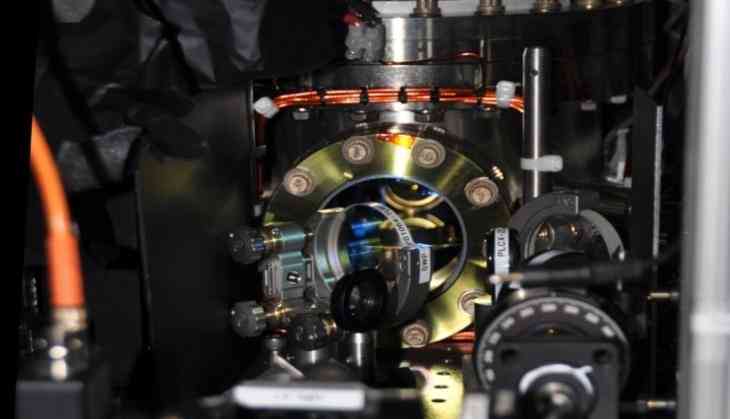MIT scientists discover a new state of matter and it could change everything!

Everything we've learned in school about the various states of matter is quickly being made obsolete in 2017. First, in late January, we had the discovery of a new state of matter – time crystals. Now, scarcely a month later, Massachusetts Institute of Technology (MIT) scientists have created a brand new state of matter, supersolids.
A supersolid, according to a press release on the MIT website, is matter which displays the structural properties traditionally expected from solids, while simultaneously being able to flow without friction, much like a superfluid. To put that context, if one was to stir superfluid, it would swirl for eternity.
Their findings will be disclosed later this month in the scientific journal Nature. The team is lead by MIT professor Wolfgang Ketterle, who has already won the 2001 Nobel in Physics for the discovery of a key ingredient in this latest success – Bose-Einstein condensate.
How it was created
Supersolids aren't a new concept. However, up until the MIT team's success, they had remained in the realms of theory.
They were brought into reality over the last ten months, as the team subjected Bose-Einstein condensate (BEC) to a barrage of laser beams, manipulating the motion of the BEC's atoms. The result of this was that the atoms changed spin (their quantum state).
Now, the atoms of the same BEC existed in two different quantum states. Additional lasers then allowed the researches to make the atoms flip between these two states.
Much like crystalline solids, supersolids too don't have a fixed density. Instead, it experiences density modulation where the density of the matter is subject to a ripple-like effect. It is this density modulation that allows gives the matter its dual properties.
What it means
Supersolids could potentially revolutionise various different types of technology, from low energy transport to superconductors and computing. However, the likelihood that we will see any of this materialise any time soon is unlikely.
As of now, the supersolid only exists in vacuum and at very low temperatures (almost total zero), so the next step is to find a way to make it more stable, so it can be put to practical uses.
However, the very discovery of this new state of matter is something to be celebrated as it opens up a whole realm of possibilities.
First published: 3 March 2017, 18:46 IST
